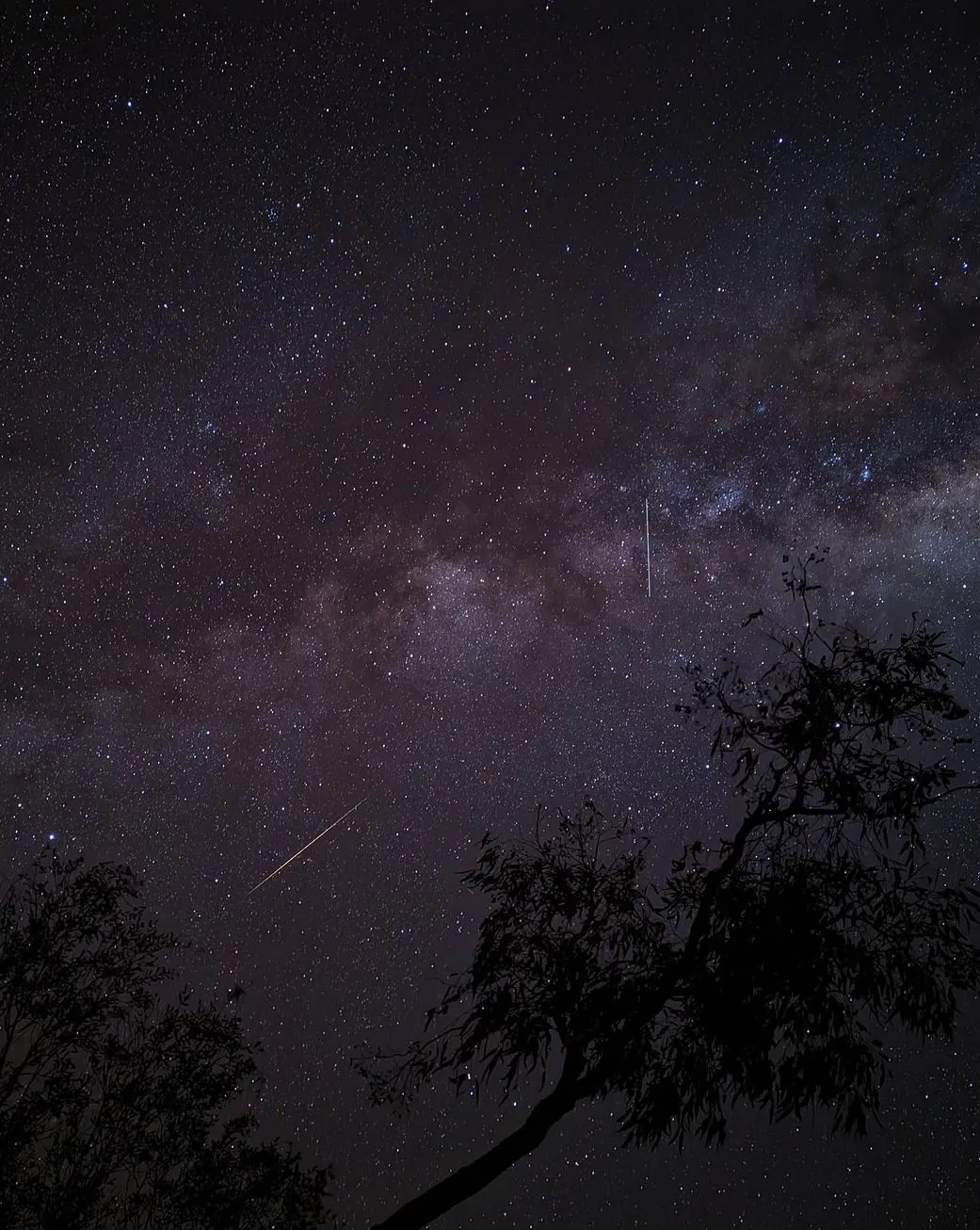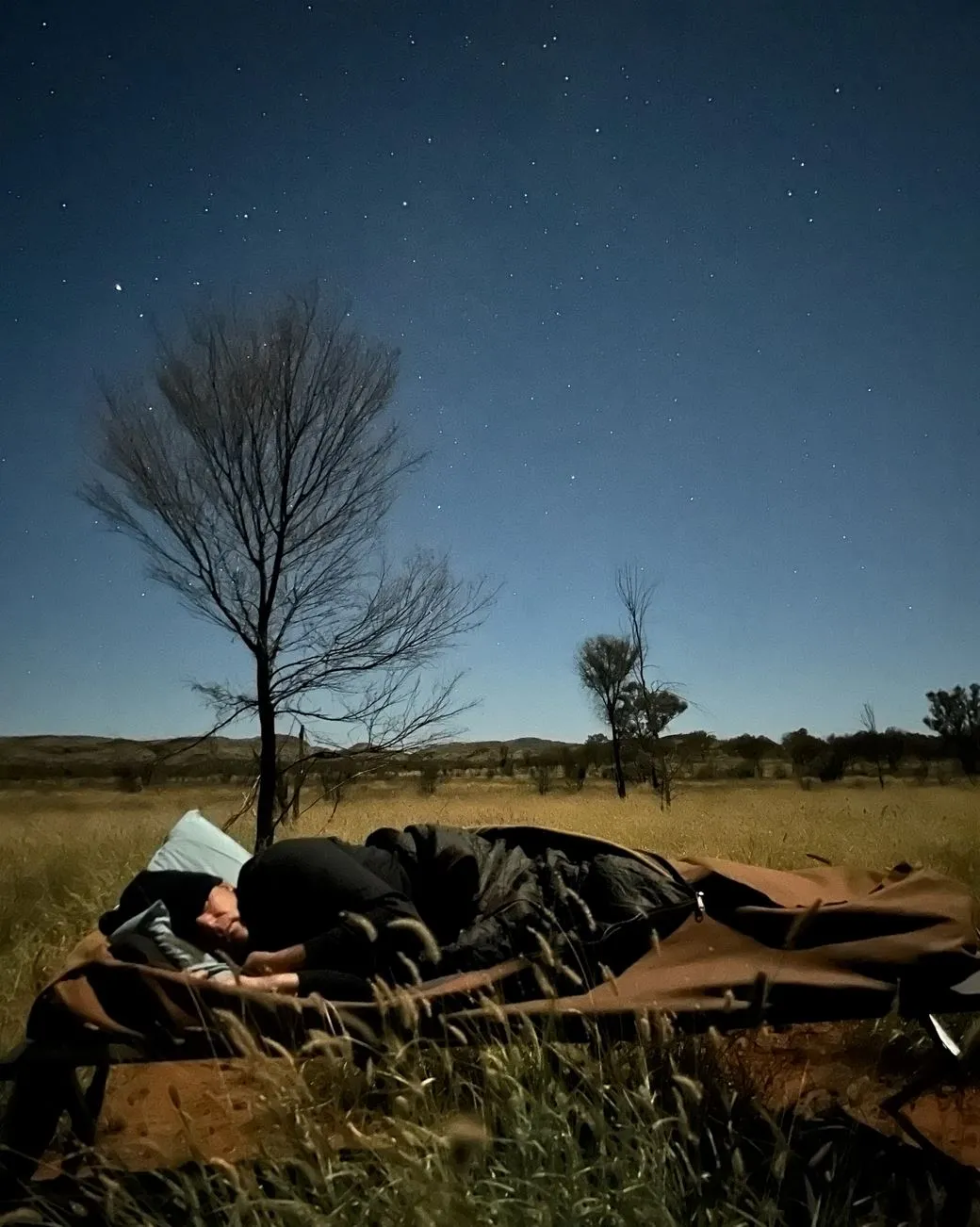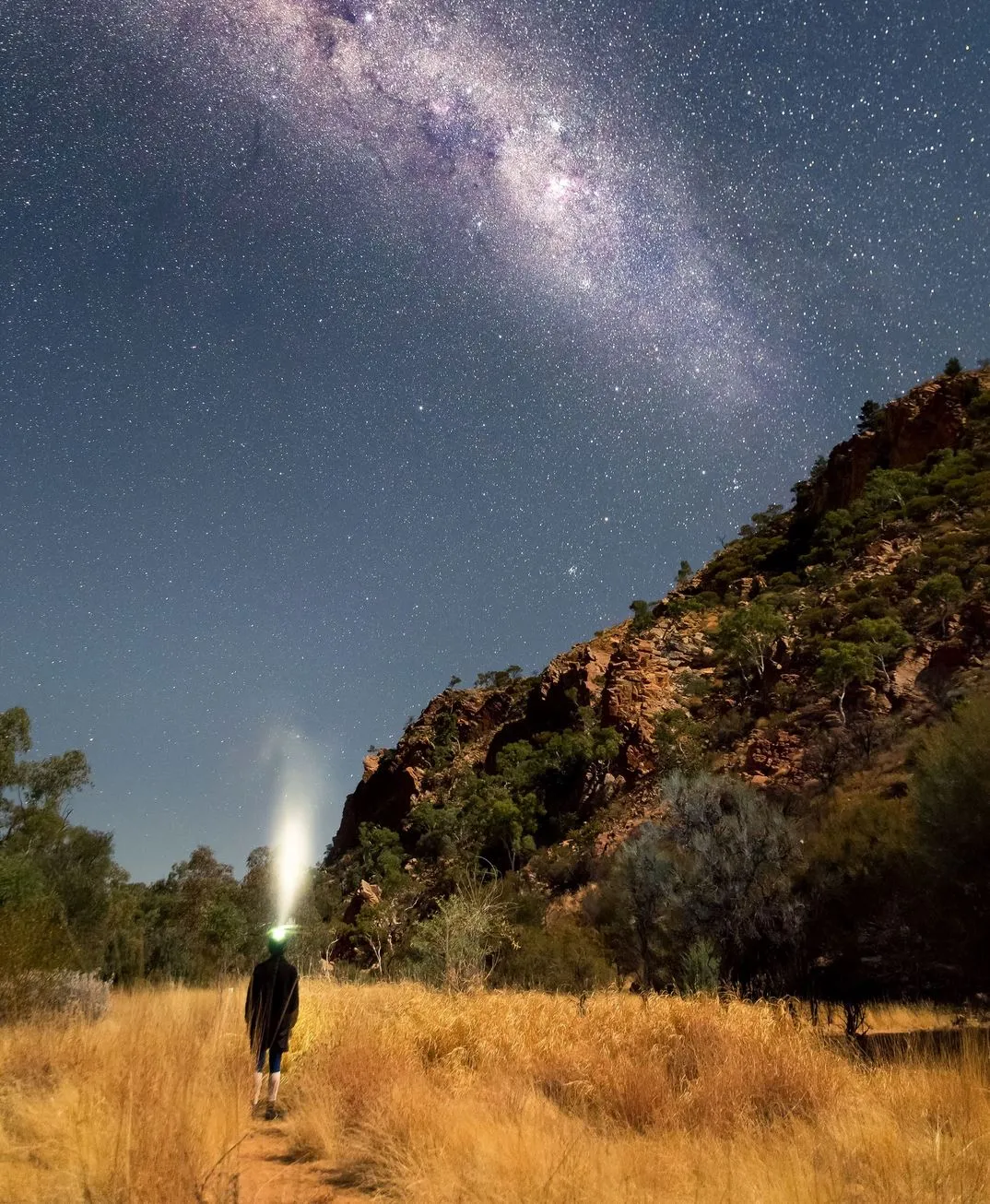The Larapinta Trail, 223km long and running through the heart of Central Australia, is famous for its tough terrain, dramatic scenery and deep cultural significance. But one of its most magnificent features is not on the ground – it’s in the sky. As the sun sets the Larapinta Trail becomes a celestial wonderland, with some of the clearest and most incredible night skies in the world.
A Starry Show
Being in a remote location, far from city lights, the Larapinta Trail is the perfect spot for stargazing. No light pollution means you can see the Milky Way, planets, constellations and even the occasional meteor shower. As you settle into your campsite after a day of walking on rocky outcrops and dry riverbeds, the night sky opens up like a cosmic theatre, and the universe is on show.


Best Time to Stargaze
While the Larapinta Trail is great any time of the year, the best time for stargazing is during the cooler months of April to September. The sky is clearer, with minimal atmospheric disturbance. Winter nights in the Outback can be cold so layer up, but the stars are worth it. A cup of tea under the stars, with a gentle breeze rustling through the valley floor, is the ultimate experience.
Constellations and Sky Highlights
- Milky Way: A river of stars across the sky, the Milky Way is at its best in the Outback.
- Southern Cross: One of the most famous constellations in the Southern Hemisphere, the Southern Cross is an icon and a wonder.
- Planets and Shooting Stars: With a bit of luck (or a telescope) you can see planets like Jupiter and Saturn, and on very clear nights, meteors.

Cultural Significance
The night sky above the Larapinta Trail has deep spiritual and cultural meaning for the Arrernte people, the traditional owners of the land. Indigenous astronomy has been part of storytelling, navigation and cultural practices for thousands of years. The stars are woven into Dreamtime stories that explain the land, life and the universe. Join a guided tour with Indigenous guides to gain a deeper understanding of these celestial connections.
Best Spots on the Trail
Some of the best places to stargaze on the Larapinta Trail are:
- Simpsons Gap: A gorge with a stunning foreground against the stars.
- Standley Chasm (Angkerle Atwatye): A sacred site where the narrow walls frame the night sky perfectly.
- Ormiston Gorge: An open space with a reflective waterhole, a starlit wonder.
- Mount Sonder: The highest point on the trail with panoramic views of the universe.
- Counts Point: Famous for its views during the day, it’s also great for night sky photography.
- Brinkley Bluff: 360-degree views of the Outback night sky.

Tips for an Unforgettable Experience
- Bring a Star Map or App: Help identify constellations, planets and other celestial bodies.
- Use Binoculars or a Telescope: Get a better view of deep-sky objects and planets.
- Let Your Eyes Adjust: Give yourself 15–20 minutes in darkness to fully adjust and see more stars.
- Pack Warm Clothing: It gets cold at night so dress warm.
- Capture the Moment: If you’re into astrophotography bring a DSLR camera with a tripod for long exposure shots.
- Check Trail Conditions: Before you set up camp at any campsite check the terrain, water sources and access to showers (like Ormiston Gorge and Ellery Creek South).
- Watch for Wildlife: Rock wallabies and Black-footed Rock Wallabies can be seen near rocky terrain at various gorges like Hugh Gorge and Serpentine Gorge.
- Plan Your Hike: Many experienced walkers recommend timing your arrival at campsites like Rocky Bar Gap, Rocky Gully and Mulga Camp to have a peaceful and private camp spot under the stars.

A Night to Remember
The Larapinta Trail is not just a hiker’s paradise but also a stargazer’s haven. Whether you’re an astronomy enthusiast, a photographer or just someone who loves the vastness of the universe, the night sky here will blow your mind. So as you plan your trek along this epic hiking trail make sure to slow down and look up—because the real magic of the Larapinta Trail happens when the sun goes down.
From the views at Hilltop Lookout to the crystal clear water at Ellery Big Hole the Larapinta Trail offers not only an unforgettable hiking experience but some of the most spectacular night skies in the Northern Territory. Whether you’re on a multi-day hike or just doing day hikes the combination of tough terrain, food drop service like Larapinta Food Drops and the sheer beauty of the Outback makes this one of Australia’s most popular multi-day hikes. So pack your hiking poles, pack your food bags and get ready for a journey that will leave you sweating all day and with a heart full of wonder at night.
FAQ
Why is the Larapinta Trail a great spot for stargazing?
The Larapinta Trail is in remote Central Australia, away from city lights. This means you get some of the clearest night skies to see the Milky Way, constellations and meteor showers.
When is the best time to see the stars on the Larapinta Trail?
The best time for stargazing is April to September, when it’s cooler and the skies are clearer.
Do I need special gear for stargazing?
While a telescope or binoculars can be handy, they’re not necessary. Your naked eye will do just fine. A star map or astronomy app will also help you identify constellations.
Are there guided stargazing tours?
Yes, there are guided tours available, including those led by Indigenous guides who will show you the stars through an Arrernte perspective.
Where are the best spots to camp for stargazing?
Brinkley Bluff, Counts Point, Ormiston Gorge and Rocky Bar Gap are the best spots for stargazing. These campsites have an open sky with minimal obstructions.
